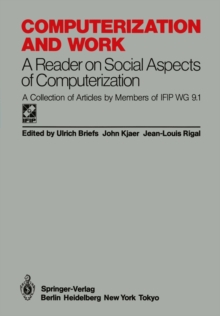
Computer-Aided Production Management PDF
Edited by Asbjorn Rolstadas
Part of the IFIP State-of-the-Art Reports series
Description
The purpose of this book is to discuss the state of the art and future trends in the field of computerized production management systems.
It is composed of a number of independent papers, each presented in a chapter.
Some of the widely recognized experts in the field around the world have been asked to contribute. lowe each of them my sincere gratitude for their kind cooperation.
I am also grateful to Peter Falster and Jim Browne for their kind support in helping me to review topics to be covered and to select the authors.
This book is a result of the professional work done in the International Federation of Information Processing Technical Committee IFIP TC5 "Com- puter Applications in Technology" and especially in the Working Group WG5. 7 "Computer-Aided Production Management". This group was established in 1978 with the aim of promoting and encouraging the advancement of the field of computer systems for the production management of manufacturing, off- shore, construction, electronic and similar and related industries.
The scope of the work includes, but is not limited to, the following topics: 1) design and implementation of new production planning and control systems taking into account new technology and management philosophy; 2) CAPM in a CIM environment including interfaces to CAD and CAM; 3) project management and cost engineering; 4) knowledge engineering in CAPM; 5) CAPM for Flexible Manufacturing Systems (FMS) and Flexible Assembly Systems (F AS); 6) methods and concepts in CAPM; 7) economic and social implications of CAPM.
Information
-
Download - Immediately Available
- Format:PDF
- Publisher:Springer Berlin Heidelberg
- Publication Date:06/12/2012
- Category:
- ISBN:9783642733185
Information
-
Download - Immediately Available
- Format:PDF
- Publisher:Springer Berlin Heidelberg
- Publication Date:06/12/2012
- Category:
- ISBN:9783642733185









